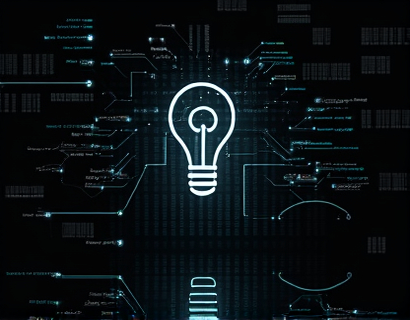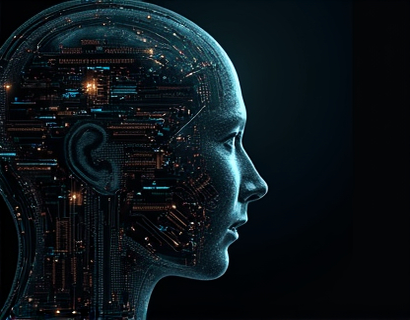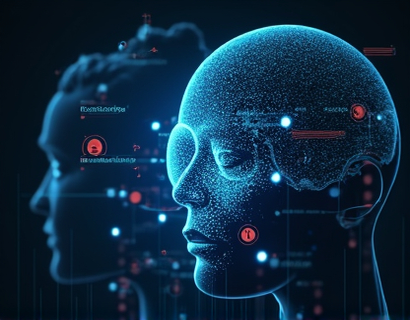Unlocking Strategic Wins: Mastering Conflict Resolution with AI-Assisted Adversarial Chat Solutions
In an era where conflicts are inevitable, both in personal and professional realms, the ability to resolve disputes effectively can mean the difference between success and failure. Traditional methods of conflict resolution often rely on human intuition and experience, but the complexity and nuance of modern adversarial situations demand a more sophisticated approach. This is where AI-assisted adversarial chat solutions come into play, offering a revolutionary method to navigate and overcome challenges with precision and strategic insight.
The Evolution of Conflict Resolution
Conflict resolution has evolved significantly over the years, from basic negotiation techniques to advanced mediation and arbitration methods. However, the introduction of artificial intelligence into this domain represents a paradigm shift. AI-driven platforms can analyze vast amounts of data, identify patterns, and provide personalized strategies that traditional methods cannot match. These platforms are designed to simulate adversarial scenarios, allowing users to practice and refine their conflict resolution skills in a controlled environment.
Understanding AI-Assisted Adversarial Chat
AI-assisted adversarial chat involves engaging in a simulated conversation with an intelligent agent that mimics human-like reasoning and behavior. This technology uses natural language processing (NLP) and machine learning algorithms to understand and respond to user inputs in real-time. The AI adapts to the user's style and approach, providing dynamic and context-aware feedback. This interaction is not just a simple Q&A session but a deep, strategic dialogue that helps users explore multiple facets of a conflict.
Key Components of AI-Assisted Adversarial Chat
- Natural Language Processing (NLP): The foundation of AI-assisted chat systems, NLP enables the AI to understand and generate human-like text. This technology is crucial for creating a natural and engaging conversation experience.
- Machine Learning Algorithms: These algorithms allow the AI to learn from interactions, improving its responses and strategies over time. The AI can adapt to different conflict styles and scenarios, making each session more effective.
- Contextual Awareness: The AI maintains a context of the conversation, remembering previous points and using them to inform subsequent responses. This ensures that the dialogue remains coherent and relevant.
- Emotional Intelligence: Advanced AI systems can detect and respond to emotional cues, helping users manage their emotions and those of the adversary. This aspect is particularly important in high-stakes conflicts where emotional control is crucial.
Personalized Strategies and Insights
One of the most significant advantages of AI-assisted adversarial chat is its ability to provide personalized strategies and insights. By analyzing the user's communication style, conflict history, and specific scenario details, the AI can tailor its recommendations to fit the unique needs of the user. This personalization ensures that the advice given is not only relevant but also actionable.
For instance, in a professional setting, the AI might suggest specific negotiation tactics based on the user's past interactions and the characteristics of the opposing party. In a personal conflict, it could offer emotional support and strategic advice to help de-escalate tensions. This level of customization is invaluable, as it empowers users to approach each conflict with a well-thought-out plan.
Navigating Complex Adversarial Situations
Complex adversarial situations often involve multiple parties, intricate interests, and high stakes. AI-assisted chat solutions excel in these scenarios by breaking down the conflict into manageable components and guiding the user through a structured problem-solving process. The AI can help identify key stakeholders, understand their motivations, and develop strategies to align or manage their interests.
For example, in a business merger negotiation, the AI might help the user identify potential points of contention, propose creative solutions to address these issues, and simulate the negotiation process to prepare for various outcomes. This proactive approach allows users to anticipate challenges and develop robust strategies in advance.
Enhancing Decision-Making Skills
Engaging with an AI-assisted adversarial chat platform is not just about resolving a specific conflict; it's also an opportunity to enhance decision-making skills. Through repeated interactions, users learn to think critically, consider multiple perspectives, and make informed decisions under pressure. The AI provides immediate feedback on the effectiveness of different strategies, helping users refine their approach over time.
Moreover, the AI can simulate a wide range of scenarios, exposing users to diverse conflict types and resolution techniques. This exposure broadens the user's problem-solving toolkit, making them more versatile and confident in handling real-world conflicts.
Building Emotional Resilience
Conflict resolution is as much about emotional management as it is about strategic planning. AI-assisted chat solutions can play a significant role in building emotional resilience. By simulating high-stress situations and providing guidance on emotional regulation, these platforms help users develop the mental toughness needed to stay calm and composed during actual conflicts.
For instance, the AI might guide a user through breathing exercises or mindfulness techniques to manage anxiety before a critical negotiation. It can also offer encouragement and positive reinforcement, boosting the user's confidence and resilience. This holistic approach ensures that users are not only strategically prepared but also emotionally equipped to handle adversity.
Case Studies and Real-World Applications
While the theoretical benefits of AI-assisted adversarial chat are clear, it's essential to look at real-world applications to understand its practical impact. In the corporate world, companies are using these platforms to train their executives in high-stakes negotiations, dispute resolution, and leadership skills. For example, a multinational corporation might use AI chat to prepare its leadership team for mergers and acquisitions, helping them navigate cultural differences and complex financial negotiations.
In the legal field, AI-assisted chat can simulate court proceedings, allowing attorneys to practice their advocacy skills and prepare for challenging cross-examinations. Law students can also benefit from these simulations, gaining valuable experience in a risk-free environment. Similarly, in the realm of public policy, government officials can use these tools to develop strategies for community mediation and conflict prevention.
Challenges and Considerations
Despite its numerous advantages, AI-assisted adversarial chat is not without challenges. One of the primary concerns is the accuracy and reliability of the AI's recommendations. The AI must be trained on a diverse and comprehensive dataset to handle the wide range of conflicts it may encounter. Continuous learning and updates are essential to maintain the AI's effectiveness.
Another consideration is the potential for over-reliance on AI. While the technology is a powerful tool, it should complement, not replace, human judgment and intuition. Users must remain critical thinkers and use the AI's insights as a starting point for their own analysis and decision-making.
Future Prospects
The future of conflict resolution with AI-assisted adversarial chat is promising. As AI technology continues to advance, we can expect even more sophisticated and intuitive platforms. Integration with other AI technologies, such as virtual reality and augmented reality, could create immersive conflict simulation environments, further enhancing the training experience.
Additionally, the development of multi-agent systems, where multiple AI entities interact with each other and with human users, could simulate more complex and dynamic conflict scenarios. This would provide an even more realistic and challenging environment for users to hone their skills.
Conclusion
AI-assisted adversarial chat represents a significant leap forward in conflict resolution, offering personalized, strategic, and emotionally intelligent support. By leveraging the power of artificial intelligence, users can navigate complex adversarial situations with greater confidence and effectiveness. As this technology continues to evolve, it has the potential to transform not only individual conflict resolution but also the broader fields of negotiation, leadership, and decision-making.











































